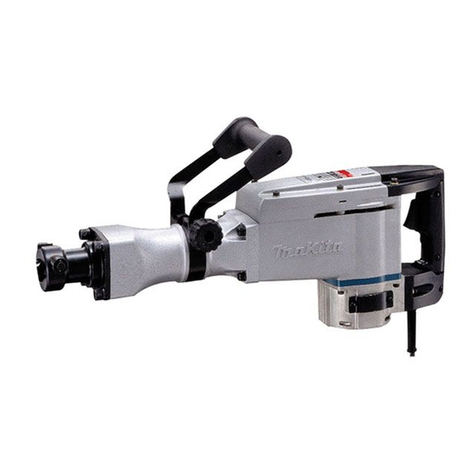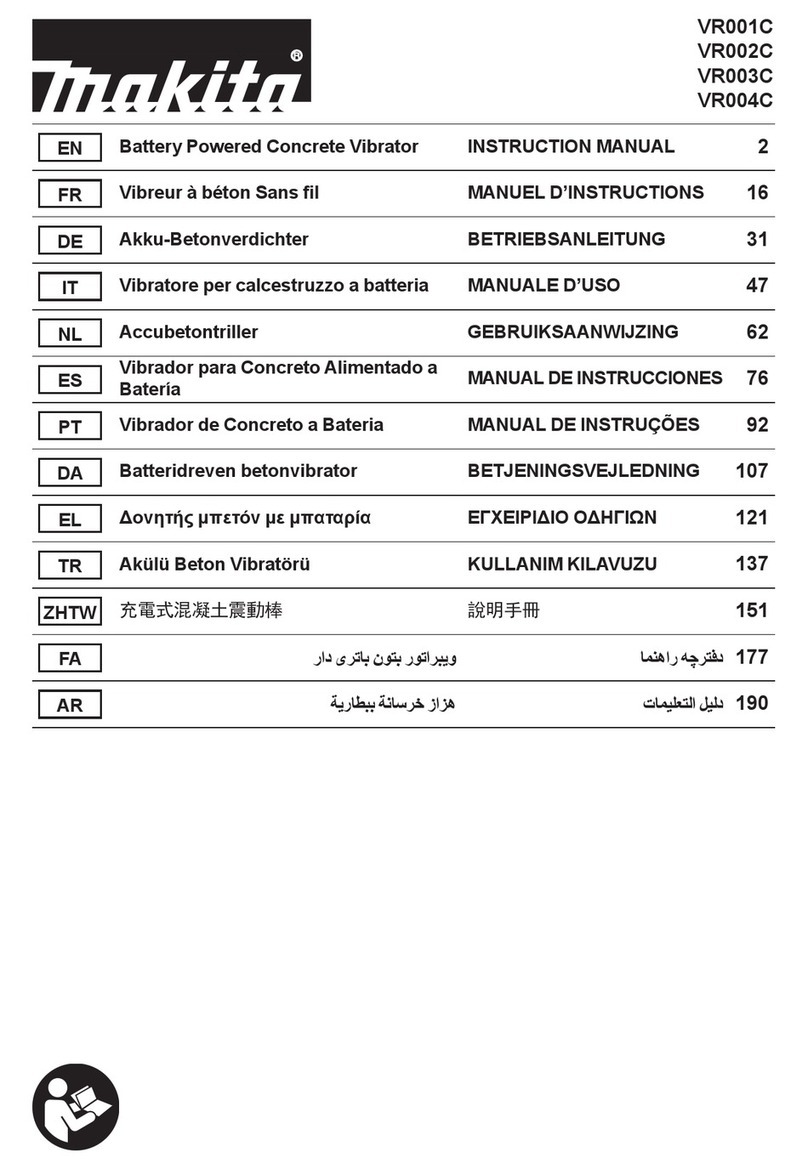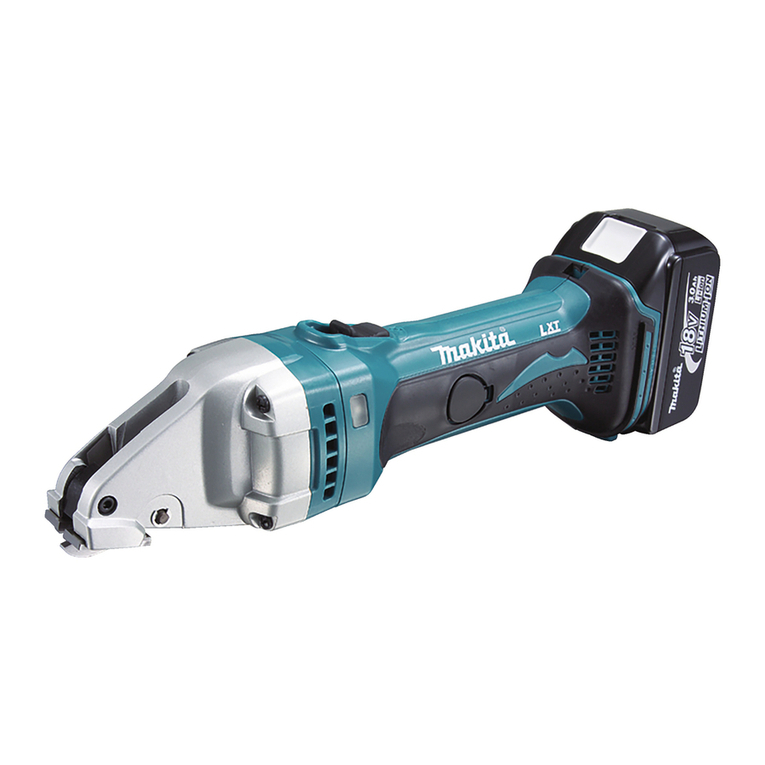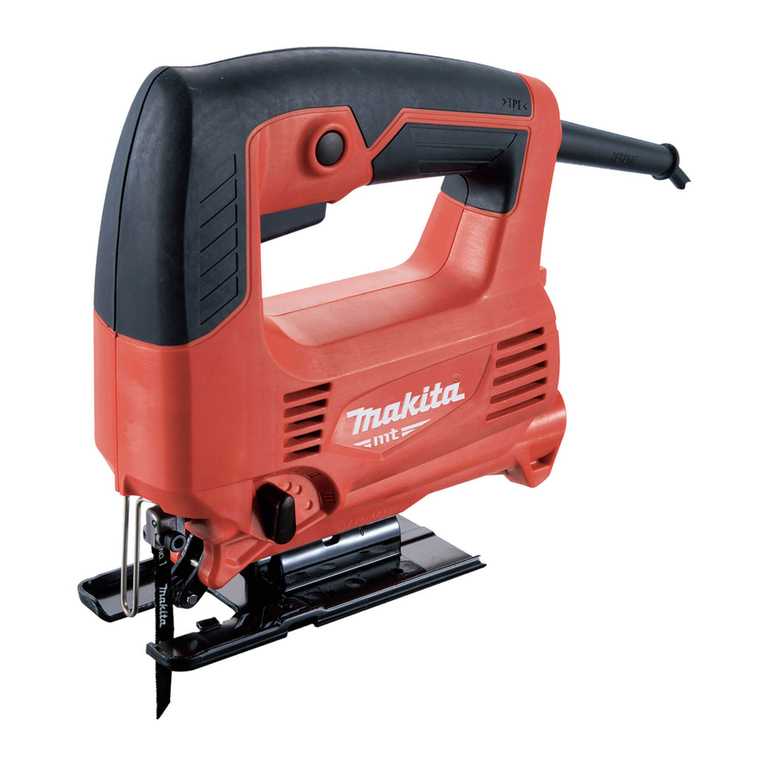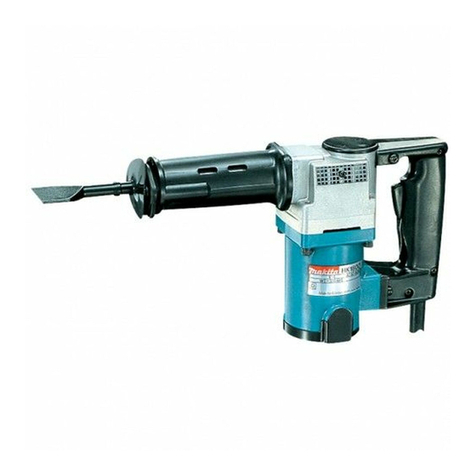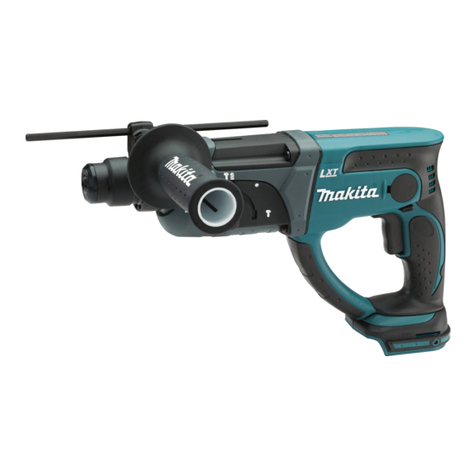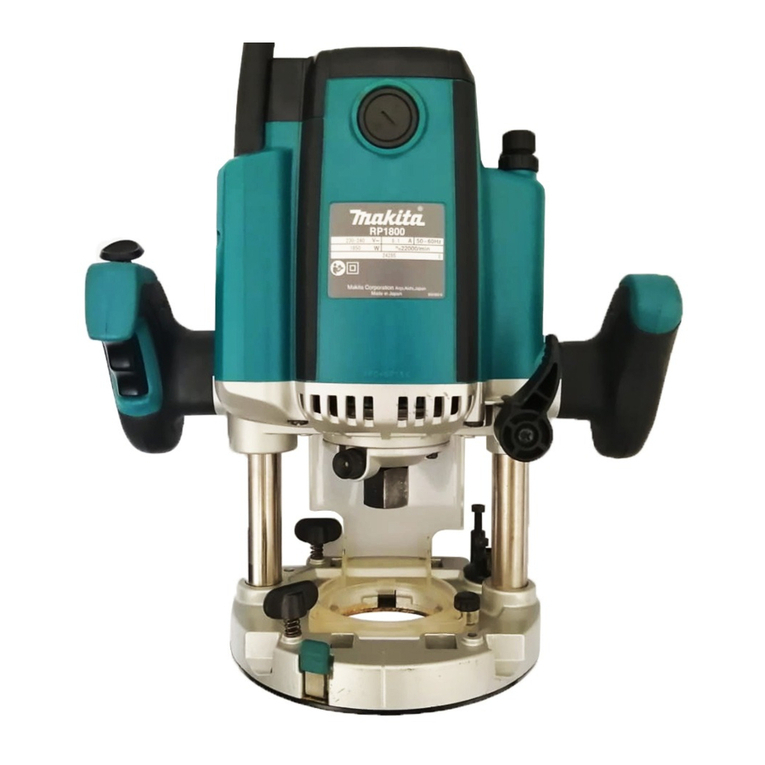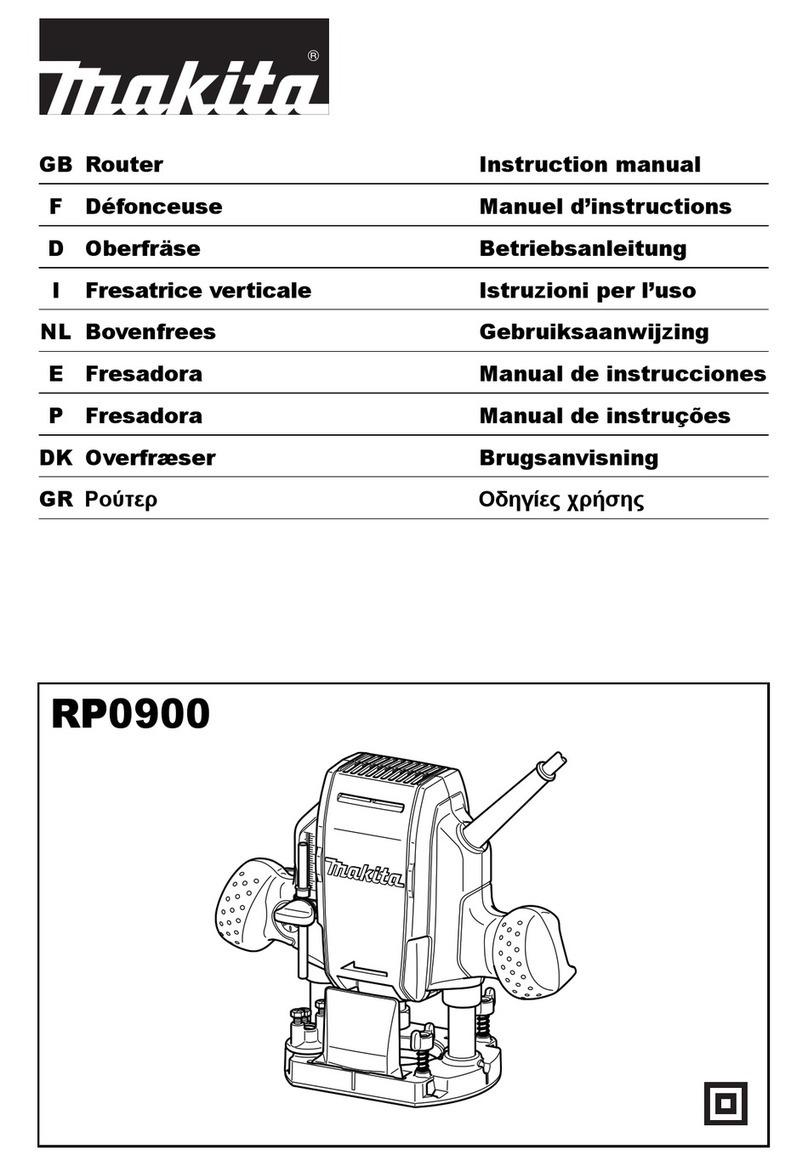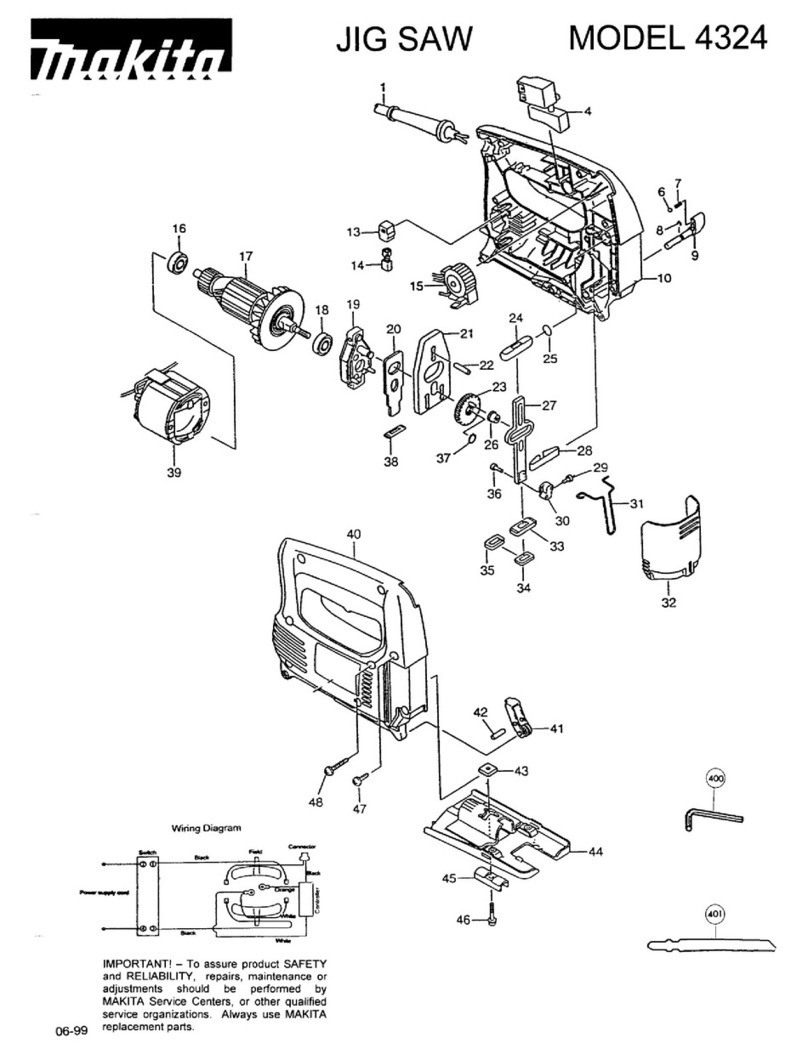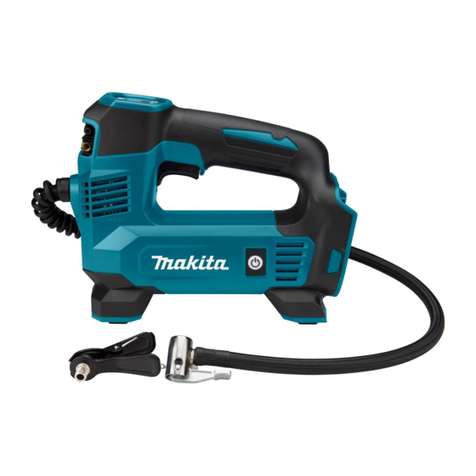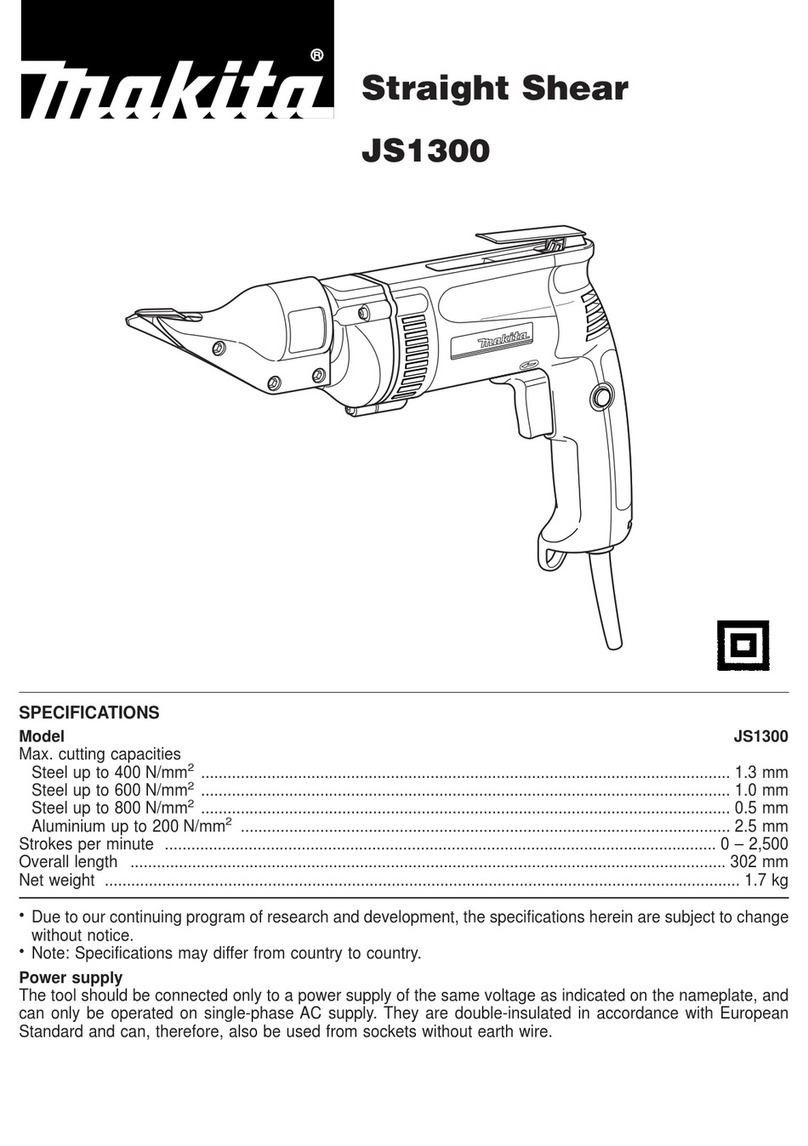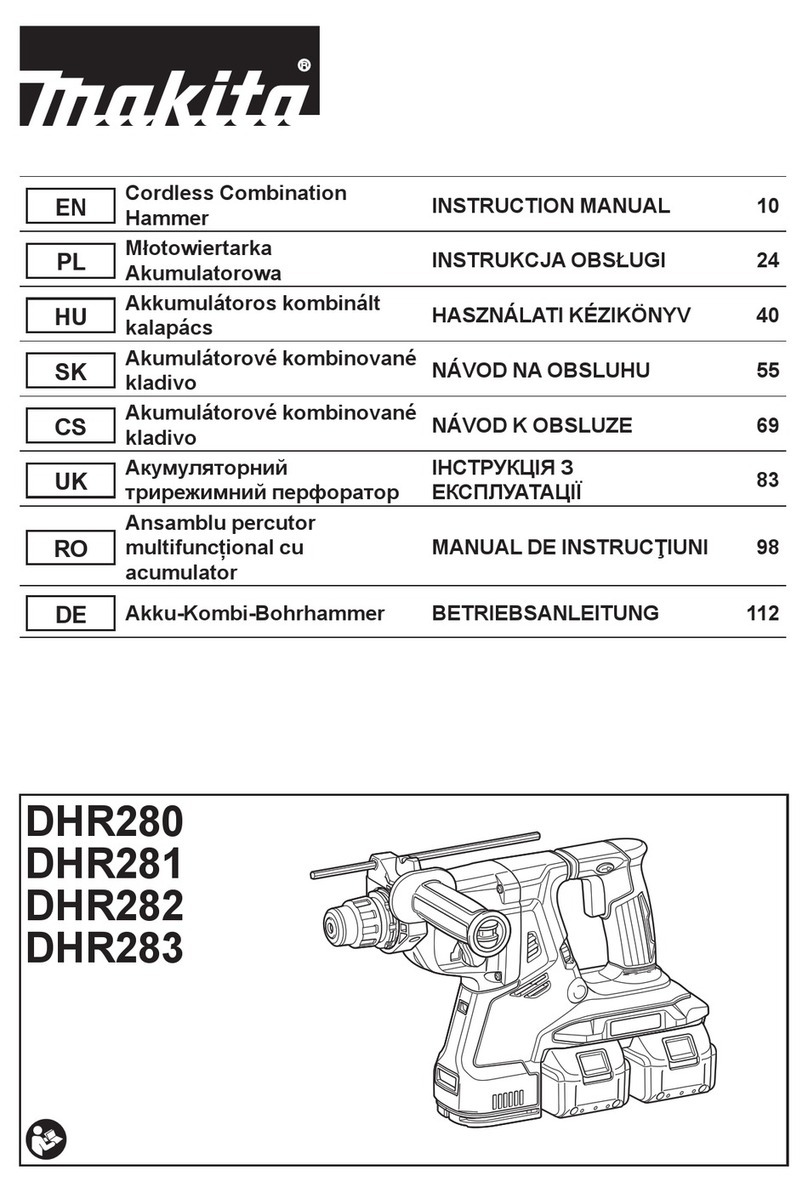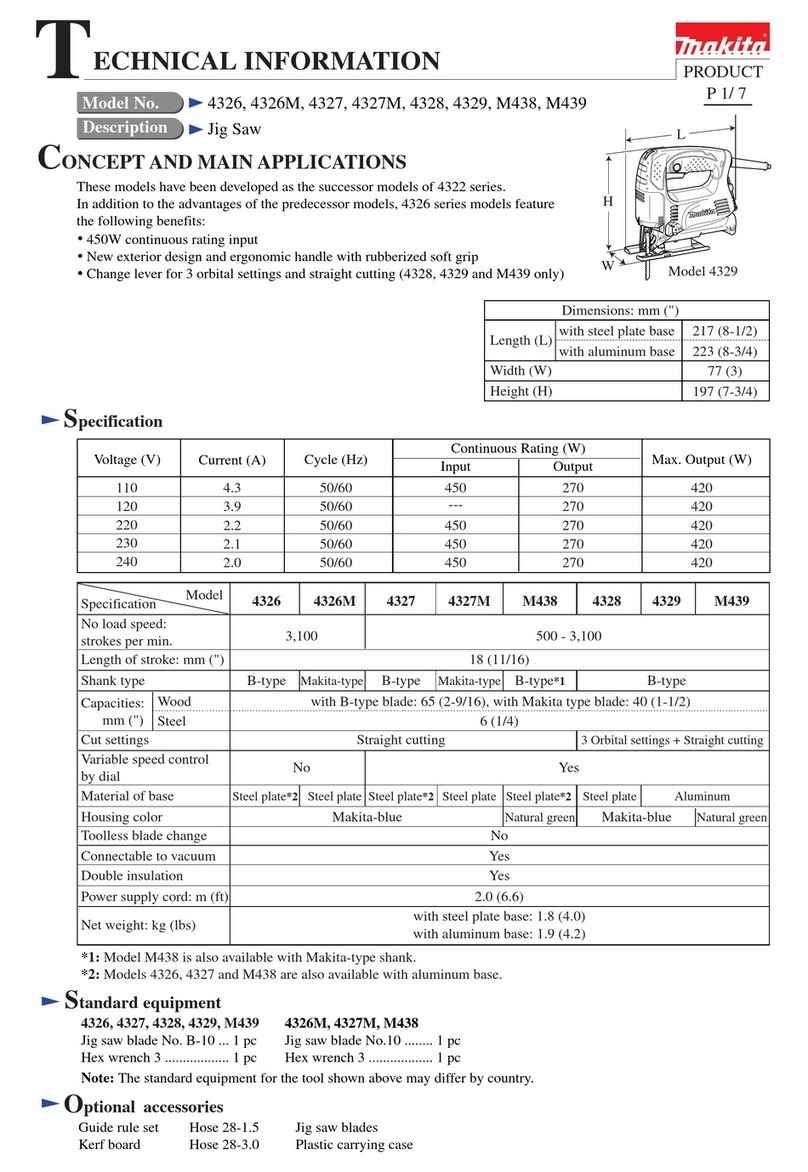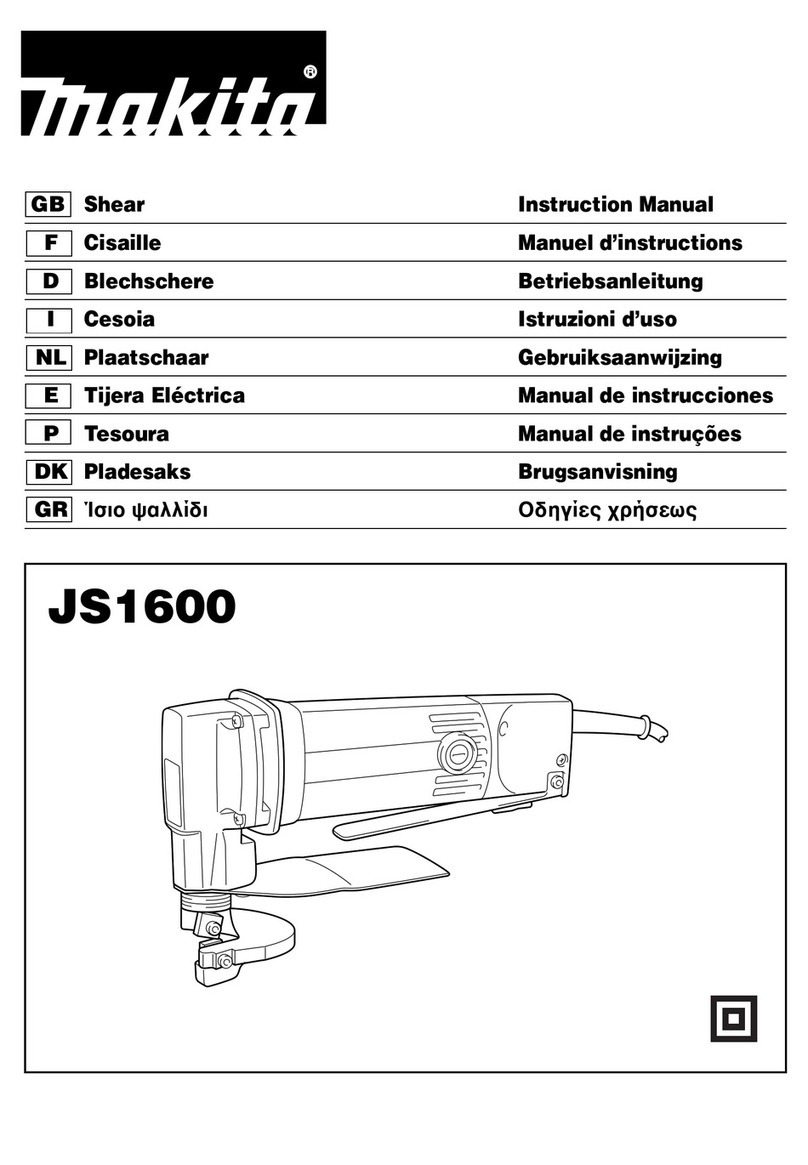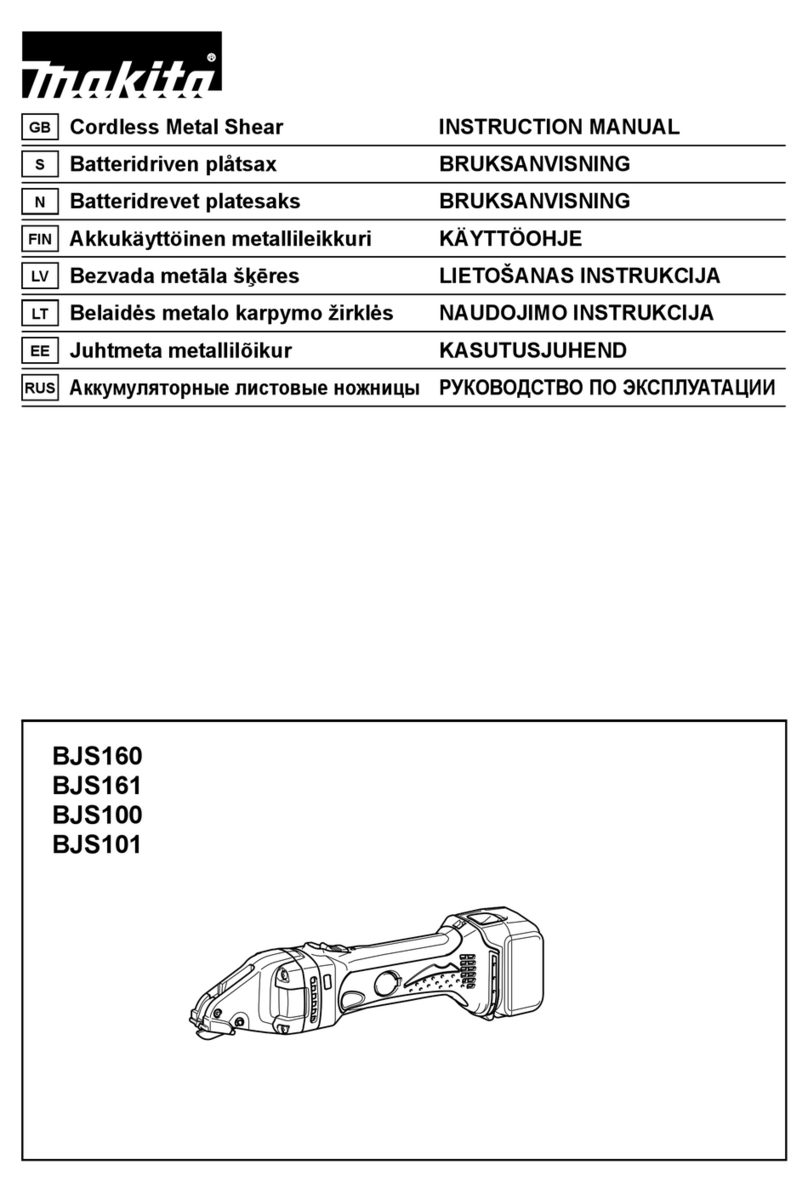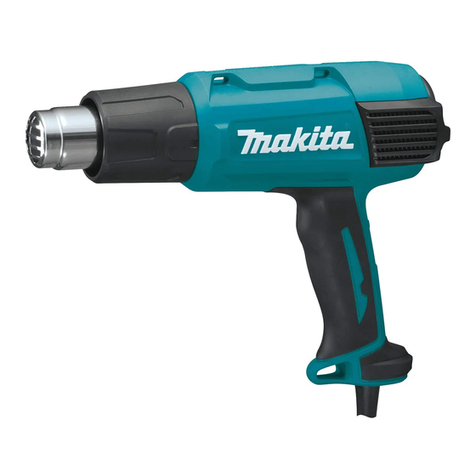
6ENGLISH
16. Ventilate your work area adequately when you
perform sanding operations.
17.
Use of this tool to sand some products, paints and
wood could expose user to dust containing hazardous
substances. Use appropriate respiratory protection.
18. Be sure that there are no cracks or breakage
on the pad before use. Cracks or breakage
may cause a personal injury.
19.
Do not use accessories which are not specically
designed and recommended by the tool manufac-
turer.Justbecausetheaccessorycanbeattachedto
yourpowertool,itdoesnotassuresafeoperation.
20. Wear personal protective equipment.
Depending on application, use face shield,
safety goggles or safety glasses. As appro-
priate, wear hearing protectors, gloves and
workshop apron capable of stopping small
abrasive or workpiece fragments.Theeyepro-
tectionmustbecapableofstoppingyingdebris
generatedbyvariousoperations.Thedustmask
orrespiratormustbecapableofltratingparticles
generatedbyyouroperation.Prolongedexposure
tohighintensitynoisemaycausehearingloss.
21.
Keep bystanders a safe distance away from work
area. Anyone entering the work area must wear
personal protective equipment.Fragmentsof
workpieceorofabrokenaccessorymayyawayand
causeinjurybeyondimmediateareaofoperation.
22.
Never lay the power tool down until the accessory has
come to a complete stop.Thespinningaccessorymay
grabthesurfaceandpullthepowertooloutofyourcontrol.
23.
Do not run the power tool while carrying it at your
side.Accidentalcontactwiththeaccessorycouldsnag
yourclothing,pullingtheaccessoryintoyourbody.
24. Do not operate the power tool near ammable
materials. Sparks could ignite these materials.
25. Do not use accessories that require liquid
coolants. Using water or other liquid coolants
mayresultinelectrocutionorshock.
26.
Always be sure that the tool is switched off
and unplugged or that the battery cartridge is
removed before carrying out any work on the tool.
27.
Always be sure you have a rm footing. Be sure no
one is below when using the tool in high locations.
SAVE THESE INSTRUCTIONS.
WARNING:
DO NOT let comfort or familiar-
ity with product (gained from repeated use)
replace strict adherence to safety rules for
the subject product. MISUSE or failure to fol-
low the safety rules stated in this instruction
manual may cause serious personal injury.
Important safety instructions for
battery cartridge
1.
Before using battery cartridge, read all instruc-
tions and cautionary markings on (1) battery
charger, (2) battery, and (3) product using battery.
2. Do not disassemble battery cartridge.
3.
If operating time has become excessively shorter,
stop operating immediately. It may result in a risk of
overheating, possible burns and even an explosion.
4.
If electrolyte gets into your eyes, rinse them out
with clear water and seek medical attention right
away. It may result in loss of your eyesight.
5. Do not short the battery cartridge:
(1) Do not touch the terminals with any con-
ductive material.
(2) Avoid storing battery cartridge in a con-
tainer with other metal objects such as
nails, coins, etc.
(3) Do not expose battery cartridge to water
or rain.
A battery short can cause a large current
ow, overheating, possible burns and even a
breakdown.
6. Do not store the tool and battery cartridge in
locations where the temperature may reach or
exceed 50 °C (122 °F).
7. Do not incinerate the battery cartridge even if
it is severely damaged or is completely worn
out. The battery cartridge can explode in a re.
8. Be careful not to drop or strike battery.
9. Do not use a damaged battery.
10.
The contained lithium-ion batteries are subject to
the Dangerous Goods Legislation requirements.
Forcommercialtransportse.g.bythirdparties,
forwarding agents, special requirement on pack-
agingandlabelingmustbeobserved.
Forpreparationoftheitembeingshipped,consult-
inganexpertforhazardousmaterialisrequired.
Pleasealsoobservepossiblymoredetailed
national regulations.
Tape or mask off open contacts and pack up the
batteryinsuchamannerthatitcannotmove
around in the packaging.
11. Follow your local regulations relating to dis-
posal of battery.
12. Use the batteries only with the products
specied by Makita.Installingthebatteriesto
non-compliantproductsmayresultinare,exces-
siveheat,explosion,orleakofelectrolyte.
SAVE THESE INSTRUCTIONS.
CAUTION: Only use genuine Makita batteries.
Useofnon-genuineMakitabatteries,orbatteriesthat
havebeenaltered,mayresultinthebatterybursting
causingres,personalinjuryanddamage.Itwill
alsovoidtheMakitawarrantyfortheMakitatooland
charger.
Tips for maintaining maximum
battery life
1. Charge the battery cartridge before completely
discharged. Always stop tool operation and
charge the battery cartridge when you notice
less tool power.
2. Never recharge a fully charged battery car-
tridge. Overcharging shortens the battery
service life.
3.
Charge the battery cartridge with room tempera-
ture at 10 °C - 40 °C (50 °F - 104 °F). Let a hot
battery cartridge cool down before charging it.
4. Charge the battery cartridge if you do not use
it for a long period (more than six months).
